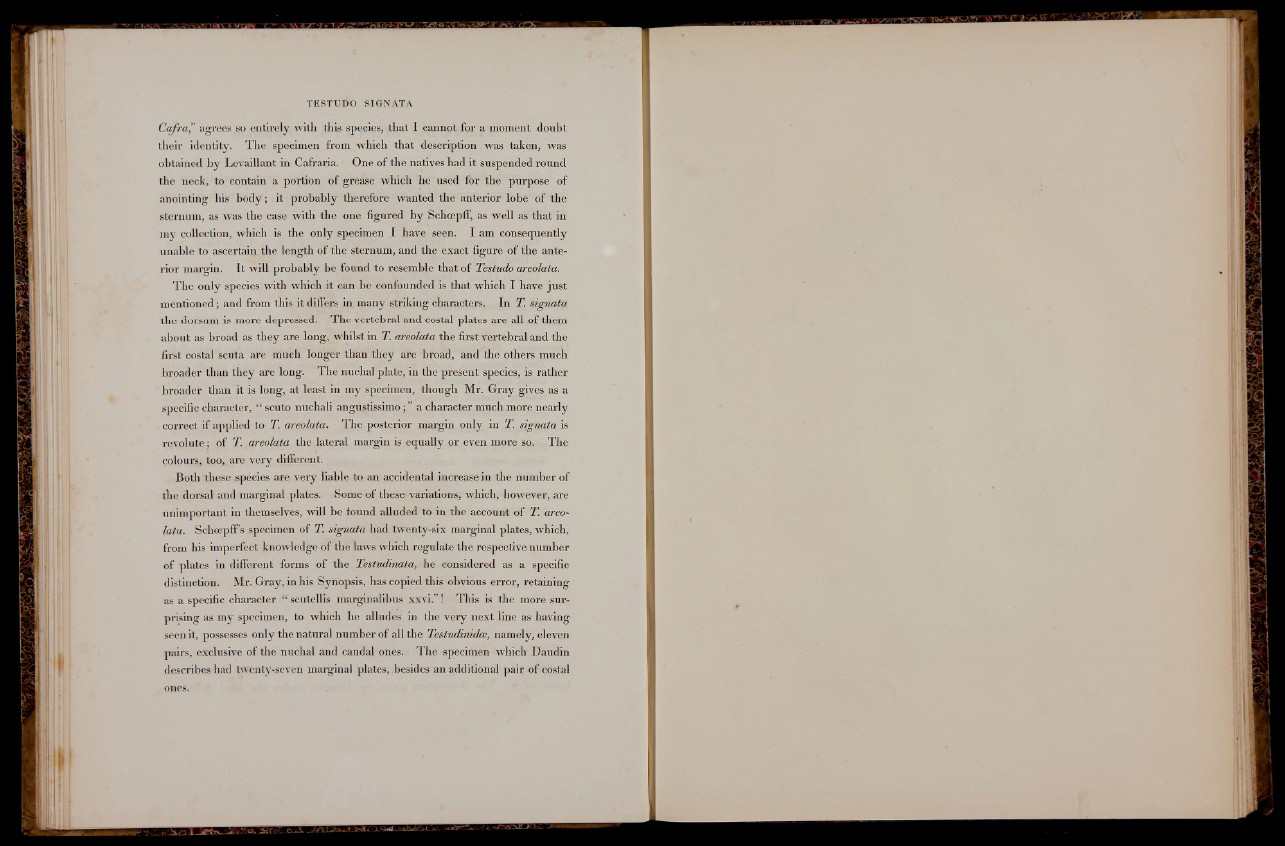
TESTUDO SIGNATA
Cafra,” agrees so entirely with this species, that I cannot for a moment doubt
their identity. The specimen from which that description was taken, was
obtained by Levaillant in Cafraria. One of the natives had it suspended round
the neck, to contain a portion of grease which he used for the purpose of
anointing his body; it probably therefore wanted the anterior lobe of the
sternum, as was the case with the one figured by SchoepfF, as well as that in
my collection, which is the only specimen I have, seen. I am consequently
unable to ascertain the length of the sternum, and the exact figure of the anterior
margin. It will probably be found to resemble that of Testudo areolata.
The only species with which it can be confounded is that which I have just
mentioned; and from this it differs in many striking characters. In T. signata
the dorsum is more depressed. The vertebral and costal plates are all of them
about as broad as they are long, whilst in T. areolata the first vertebral and the
first costal scuta are much longer than they are broad, and the others much
broader than they are long. The nuchal plate, in the present species, is rather
broader than it is long, at least in my specimen, though Mr. Gray gives as a
specific character, “ scuto nuchali angustissimo; ”, a character much more nearly
correct if applied to T. areolata. The posterior margin only in T. signata is
revolute; of T. areolata the lateral margin is equally or even more so. The
colours, too, are very different.
Both these species are very liable to an accidental increase in the number of
the dorsal and marginal plates. Some of these- variations, which, however, are
unimportant in themselves, will be found alluded to in the account of T. areolata.
SchoepfFs specimen of T. signata had twenty-six marginal plates, which,
from his imperfect knowledge of the laws which regulate the respective number
of plates in different forms of the Testudinata, he considered as a specific
distinction. Mr. Gray, in his Synopsis, has copied this obvious error, retaining
as a specific character “ scutellis marginalibus xxvi.” ! This is the more surprising
as my specimen, to which he alludes in the very next line as having
seen it, possesses only the natural number of all the Testudinidce, namely, eleven
pairs, exclusive of the nuchal and caudal ones. The specimen which Daudin
describes had twenty-seven marginal plates, .besides an additional pair of costal
ones.